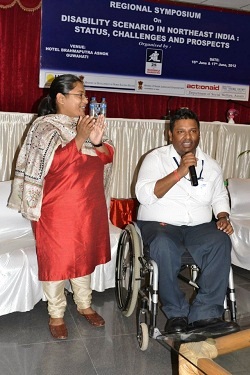At times I feel like a Lilliput staring at the many Gullivers in US. Only, Gullivers of US are its buildings, roads, bridges, food, sometimes people and everything in between.
Take a trip down to the nearest farmer's market, and you find even fruits and vegetables that in a weird way become symbols of the country's obsession with the BIG.
Onions that are so integral to Indian cooking – they are twice the size of onions back home. And come in whites, yellows and pinks. As for the tiny sambar onions that South Indians so love, they are called, `Pearl Onions' and made pricier.
Likewise radish could come in the size of a huge ridge gourd, some varieties of chillies or green peppers, tomatoes the size of apples, and bananas so neat and big I doubt if they are real at all. The lemons here will make our local lemons sour with tears. They are...err...the size of oranges.
Ditto for tea cups/coffee cups – actually, they are not cups, they are mugs. Their small mugs are not our big mugs, but giant mugs that cannot imagine. Shock for us Indians who are used to tiny steel tumblers with steaming filter kaapi placed in flat bottom cups.My first US experience with the big at a coffee cafe was during the first trip to New York, at the coffee chain that celebrates itself for being Big. Big paper mugs with no handles but a cardboard holder showing the brand's green consciousness.
Can you in the wildest of dreams imagine you will not be able to finish licking an ice-cream cone? Specially if you are an ice-cream lover? My hubby and I bought an ice-cream cone near Wall Street in downtown Manhattan once, and shared it. I love ice-cream. He does too! The two ice-cream lovers could not handle the cone all by themselves because they realised, that the quantity was four times that of their MTR softee.
Not once in India all these decades did I struggle at eating an ice-cream. Not in Big Apple. Downtown Manhattan has been known for ages as The Big Apple. So the Big love is old.
Festivals in US are, sparse, but big. Christmas is not one day's celebration, but an entire season's non-stop effort by big businesses, to push you towards their retail stores and shop. Guess what the result of that is?
My friends at Jersey City who live close to the Journal Square station, had an attempted break-in recently. Post-Christmas. ``Robberies have increased here after Sandy and more so after Christmas,'' my shaken friend observed, hinting at how all the spending during Christmas season adds up to the post-New Year `return to reality', that they have no money left and resort to break-ins.
Christmas was hardly over, when I saw the local dollar store aisles that stocked Christmas trees, socks and ornaments get cleared up for Valentines Day nothings.
Did St Valentine colour code Valentine's Day ? Why this overdose of red everywhere? Big teddy bears. Big cards....sometimes with Big words, and Big cushy hearts. as if selling big hearts will eliminate all heart problems of the world!
How does a large heart shaped pillow in its bright red have anything to do with how much one individual loves another? How does giving chocolates to your love show your real measure of love? And why is universal love not even vaguely visible even in the wordings of such products?
The truth is, that pillow loses all its charm, sometimes even purpose, the minute Feb 14 turns to Feb 15. And we're paying the businesses for such short short utility life products. Where do all the V-day goodies go after Feb 14? That would make for a piece of writing!
As the days roll towards D-Day V-Day though, entire shops get filled up with heart-shaped clutter to replace Christmas glitter. From the boutique stores to the giants like Walmart, Target and K-Mart.
Like the Metro Cash and Carry that forayed into our desi market some years back to steep opposition, US has Costco and BJ's stores that rule the wholesale roost. A trip to one of them eliminates your need for a gym session or daily walk. Mere walking through aisles and craning your neck backwards to surf those titanic shelves tires you.
It is not as if every product in wholesale stores comes cheap in spite of the `wholesale' brand tag. ``The quantities they sell are so huge,'' notes my friend Hema Priyadharshini who is a newly-wed. ``When they sell junk food like muffins and potato chips in such large sizes and numbers, you are forced to eat them even if you need smaller sizes,'' says the home-maker who chucked the idea of buying a chips sachet because it was too big.
Ubiquitous Walmarts and Targets are as big as the wholesale stores even if they carry the `retail' tag. Big boxes. Every store is a box. Malls mean big boxes looking glued to other boxes to form a cluster. If you have indoor malls, smaller boxes get squeezed in too, with some free flowing walking space and some seats that are a mercy.
Every time I look at these boxes, those all popular lines in Zindagi na milegi dobara play in my head : `Insaan ko dibbe mein sirt tab hona chahiye...jab who mar chuka ho'. It means, a human should only be in a box after death.
Sigh!
A year and more of living in, the local petti kadai and vegetable cart-vendor look like distant luxuries of another era. As if this boxed up life was not boring enough, India just decided to welcome big box Walmarts into its overcrowded city-hives. What next? Walmart box that guzzles up other existing matchboxes that home people? In a country where land - every inch of it is worth diamonds?
I shudder to think of the parking problems. In America, average parking lots resemble nothing short of Bangalore's Parade Ground or South Mumbai's Shivaji Park. Dreaming of such parking lots in India? Keep dreaming.
It's not like small boxes aka stores, are extinct in US.
They exist at Jersey City's India Street which is as good mix of Bangalore's Brigade Road, Church Street and Commercial Street areas. Eateries, restaurants, grocery stores and even boutiques besides shops selling traditional stuff line the street.
Small stores exist at small town market squares and in some towns that pride over their history (a few centuries old that is). I love them, because they manage to exist in the face of burgeoning big box monstrosity.
It is funny, how we Indians ape American lessons to become Size Zero, while everything in America is driven towards large. And that includes cars. Big cars.
The other day, a cop knocked on my door that faces the parking lot.
``Good morning Ma'm,'' he began.
Shock. I looked at the police car and figured out he was genuinely a cop. And was nervous.
Did we do something wrong? Even if by mistake? My hands trembled as thoughts flash raced, but he was as polite as possible. From all his words that shocked out ears managed to grasp, I understood that a bunch of hooligans robbed a car from the neighbouring community of luxury apartments, and parked it in front of my door! Needless to say, the car was, Big.
It took me a while to shake off shivers after he left. But those were precious moments to thank the stars for not owning something big, lest it got lost.
A lot of shopping in US is discount coupon driven – coupons that land in your mailbox every week and come in huge volumes before Thanksgiving and Christmas. Or come attached to weekend newspapers. Some have mastered the art of buying goods worth hundreds of dollars for the price of less than $ 10 through these coupons.
It's amusing though, when episodes and episodes of Extreme Couponing focus on people who use discount coupons to buy up processed food, tissue rolls, and toiletries for an entire year or even more! I do not get this. They talk of saving money. Buying things that you do not use much for several months ahead, processed food cans at that, is not quite saving! They even boast about stocking up for many months at a stretch.
What about the precious home space these stocks guzzle up? Kitchen and bath tissue rolls wait under cots for eternity to be used, tens of tomato sauce cans find their way to clothes closets and entire garages that should be housing cars instead.
As for homes, the ones in suburbs or towns are large while city folk manage to value small spaces. When we moved into our one bedroom apartment here, the maintenance guy asked me how I felt about the new home.
“We don't need this much space! There is too much of it for just the two of us,'' I said. He was surprised. I wanted to lecture him about how luxury homes in Mumbai are one-bedroom apartments.
Unless you live in New York or other big cities, tiny homes that we Indians are so used to, are alien to people here. It's probably because people are used to having large spaces around. Unfortunately, the `large' bit transcends to love for large homes, large cars, large TVs, `big price' gadgets, and large brands. What is forgotten is the enormous burden it places on resources. And that is why my eyes light up when when I read pieces on tiny homes.
Jay Shafer whose Tumbleweed Tiny House Company makes tiny homes, has an 89-square-foot home for himself. Others from downtown New York have learnt to live big in tiny spaces too. The city recently saw a contest for tiny apartments design, with some of the design entries even combining sustainable plans.
In the suburbs and countryside too, US has people who scaled down from owning large spaces to tiny ones either so they leave lesser carbon footprint, or to cut down on mortgage payments.
Jay Chafer who founded the tiny home making company Tumbleweed Homes and even ships them, built is own movable home with 89 square feet space. And then we have Karl Hari and her family who downscaled to a tiny home in the countryside, to cut down on mortgage and get creative with their lifestyle. They family even blogs about it.
Am hoping that this small but significant movement for small spaces grows into the real big lifestyle change, and moves on to being preferred over Big – be it about money, store sizes, food, shelter or industry.
I do prefer an exception to going small bit though, and that would be my favourite big ticket TV show – The Big Bang Theory.
Find us on facebook: facebook.com/TheThumbPrintMag







































